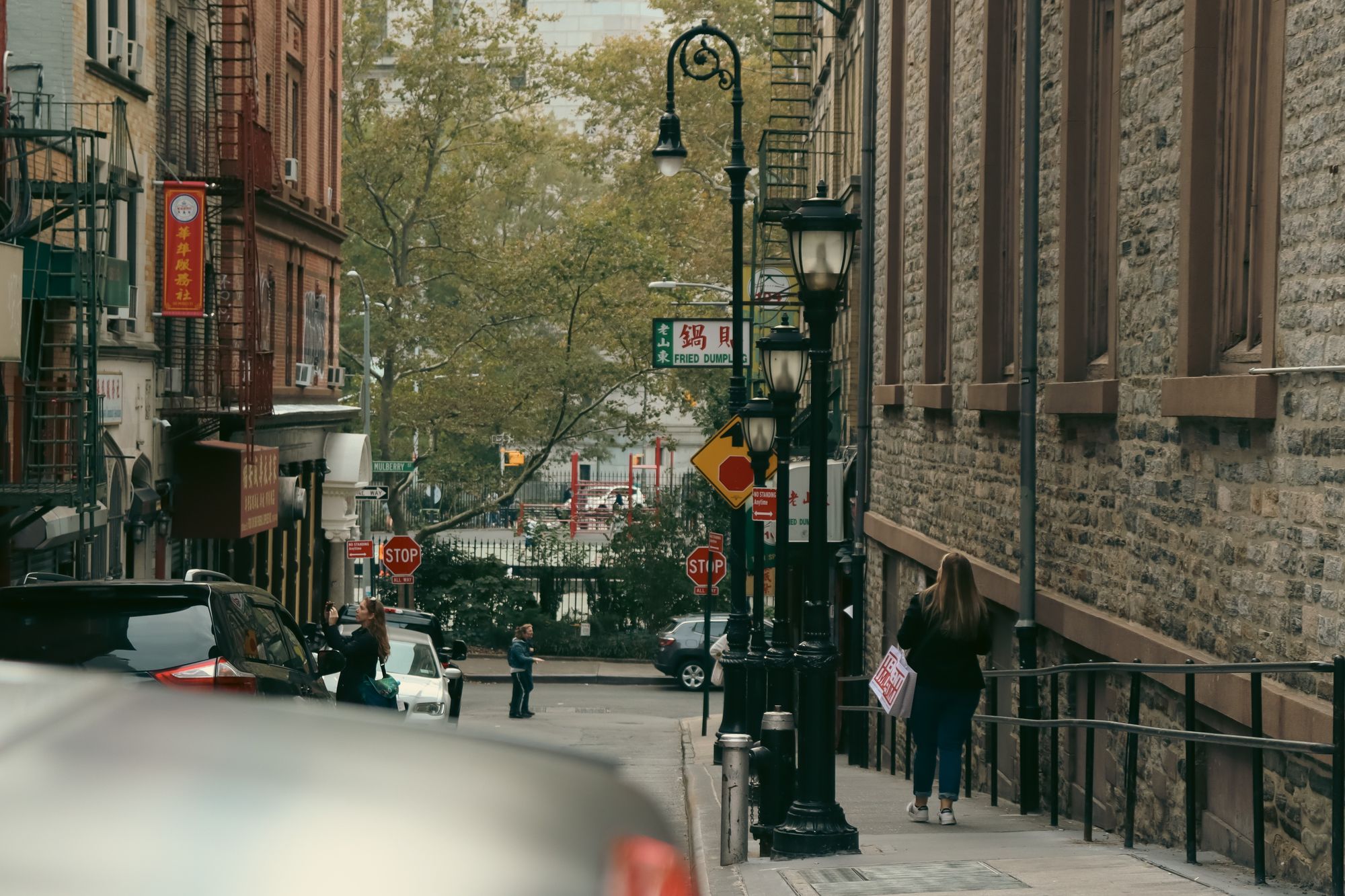Today, public accommodations laws have engraved every aspect of an American’s private and public life. From employment to tenancy to businesses, the rise of public accommodations laws has become the epicenter for equal access and opportunity for all individuals. Over time, however, laws aimed at preventing discrimination often have conflicted with other groups of protected freedoms.

Written By
Jerry Chen
A clear resemblance reflects the recent Supreme Court ruling, 303 Creative v. Elenis, where a website designer argued that Colorado’s public accommodation law violated her First Amendment rights.[1] The Supreme Court has historically grappled with finding the appropriate balance between First Amendment free speech protections and anti-discrimination laws, issuing shifting and conflicting rulings on this tension over time. Many scholars question the future of public accommodations and discrimination laws following the Supreme Court ruling in favor of 303 Creative.[2]
In the early colonial times, African Americans who were not enslaved frequently experienced discrimination in public life.[3] The earliest public accommodations law arose in the early 19th century, almost 100 years after the nation’s founding. A decade after prohibiting discrimination in public education, Massachusetts set to become the first state to enact a public accommodations law in 1865.[4] Numerous pieces of legislation followed during the Reconstruction Era to mitigate racial discrimination. The Civil Rights Act of 1875 which promoted “full and equal enjoyment of public accommodations” was short-lived after the Supreme Court struck down the law.[5] The ruling foreshadowed another landmark case Plessy v. Ferguson where the Supreme Court ruled that separate but equal public facilities were deemed constitutional.[6]
Nevertheless, many states began their own state public accommodations laws and by the middle of the 20th century, nearly 20 states had their own public accommodations laws.[7] As a product of the Civil Rights Movement, the Civil Rights Act of 1964 became a landmark federal public accommodations law that banned discrimination in all 50 states.[8]
The passage of the Civil Rights Act of 1964 soon faced legal challenges from businesses opposed to its public accommodations provisions. One major case was Heart of Atlanta Motel, Inc. v. United States, in which the owner refused to serve African American customers, arguing it infringed his property rights and freedom of choice.[9] The motel owner, Moreton Rolleston, additionally challenged Congress' authority to enact the law under the Commerce Clause.[10] However, the Supreme Court upheld the Civil Rights Act in this case, ruling that Congress could regulate public businesses like motels because they affected interstate commerce.[11] This established an important precedent that public accommodations laws were constitutional under the Commerce Clause. Furthermore, it recognized that governments had a compelling interest in eliminating discrimination in publicly accommodated areas.[12]
The First Amendment's protections of free speech and expression faced increasing challenges as the government asserted compelling interests in regulation. One early legal challenge arose in Roberts v. United States Jaycees (1984), where discrimination existed alongside expressive rights.[13] The United States Jaycees was a young businessmen's organization that originally only admitted male members, but gradually allowed women to join without voting privileges.[14] However, two Minnesota chapters defied this rule and admitted women as full voting members.[15] When the national Jaycees revoked the chapters' charters, the chapters filed sex discrimination claims under Minnesota's Human Rights Act.[16] The national organization later sued Kathryn Roberts of the Minnesota Department of Human Rights, seeking an exemption from the anti-discrimination law.[17] The Jaycees argued the law would compel the organization to accept women members, impermissibly altering how the group expressed itself, violating members' First Amendment freedoms of association and expression.[18] Nevertheless, the Supreme Court upheld Minnesota's law, ruling the anti-discrimination law did not aim to suppress speech or distinguish permitted and prohibited activity based on viewpoint.[19] The Court found the law's purpose was preventing discrimination, not intentionally denying the Jaycees' views.[20] Thus, even amidst First Amendment protections, the government maintained compelling interests in regulating discrimination.
For over a decade, lower federal courts consistently upheld state and local public accommodation laws that prohibited discrimination, even when the laws conflicted with an organization or business's free speech rights.[21] However, like many landmark Supreme Court decisions throughout history, the Court's early supportive rulings on public accommodation laws were open to change over time. Crucially, in several key cases, the Court gradually shifted the legal burden to the government to justify laws infringing on free speech rights.
The landmark 1995 case Hurley v. Irish-American Gay, Lesbian and Bisexual Group of Boston was a turning point. In Hurley, the Court held that the Massachusetts State Court could not force the organizers of a St. Patrick's Day parade to include marchers expressing messages contrary to the parade's theme.[22] The Court ruled the parade itself constituted a form of protected symbolic speech.[23] Forcing parade organizers to include lesbian, gay, and bisexual marchers would, in the Court's view, improperly alter the expressive content of the parade.[24]
This reasoning opened the door to claims by other groups that public accommodation laws violated their freedom of speech. In Boy Scouts of America v. Dale, the Court narrowly ruled 5-4 that the Boy Scouts had a First Amendment right to exclude homosexuals from serving as troop leaders.[25] The Scouts maintained that homosexuality conflicted with the organization's expressive values, and including gay leaders would compel the Scouts to send a message that “the Boy Scouts accepts homosexual conduct as a legitimate form of behavior.”[26]
Most recently, the Supreme Court expanded its review to artistic expression in public accommodations in Masterpiece Cakeshop v. Colorado Civil Rights Commission. Here, a cake shop owner refused service to a same-sex couple in 2012 because of his religious beliefs. The owner argued his custom cake creations were artistic expressions protected by the First Amendment. After the couple filed a discrimination complaint, the Colorado Civil Rights Commission sought to hear the case and eventually sided with the couple. The owner sued, and after appeals, the Supreme Court took the case. However, the Court did not address whether refusing service based on religious beliefs was discriminatory. Instead, it asked whether Colorado's law violated the Establishment Clause, based on evidence the Commission, which was an arm of the government, had acted with religious hostility toward the owner during proceedings.[27] Although the Court ruled for the owner on procedural grounds, the core free speech issues remained unresolved.
Hurley, Dale, and Masterpiece Cakeshop showed the Court's increasing willingness to favor free speech rights over nondiscrimination laws, a trend that continued in later rulings. The government now faced a heavier burden to justify laws limiting the freedom of groups and businesses to determine their own membership and speech.
In 2008, Colorado expanded its anti-discrimination law, the Colorado Anti-Discrimination Act (CADA), to prohibit discrimination based on sexual orientation and gender identity against LGBTQ+ members.[28] Business founder Lorie Smith owns a for-profit business that provides web design services to members of the public.[29] Named 303 Creative, Smith’s business had expanded to a niche in creating and designing custom wedding websites for customers. However, as a Christian, Smith claims that her religious stance would not be consistent if she had provided services to same-sex couples.[30] When Smith wanted to create a notice of dispreference to provide services for same-sex couples, she was cautious that such notice would violate Colorado’s AntiDiscrimination Act (C.A.D.A).[31] Because 303 Creative was registered in the State of Colorado and her principal place of business resided in Colorado, Smith had to abide by state law. Before the State of Colorado could enforce CADA, Smith sued the State of Colorado for violating her First Amendment rights. Because Smith claimed that the state violated her constitutional rights, Smith, represented by Alliance Defending Freedom, sued in federal district court in 2016.[32] In the case, 303 Creative LLC v. Elenis, the petitioners, 303 Creative, is suing Audrey Elenis, the Director of the Colorado Civil Rights Division which enforces CADA.[33]
In a 2-1 decision, the 10th Circuit of Appeals ruled against Smith, but the dissenting arguments from Judge Timothy Tymkovich were often cited in the Supreme Court majority opinion. By ruling against Smith, Judge Tymkovich highlighted that governments could force “an unwilling Muslim movie director to make a film with a Zionist message,” they could compel “an atheist muralist to accept a commission celebrating Evangelical zeal,” and they could require a gay website designer to create websites for a group advocating against same-sex marriage, so long as these speakers would accept commissions from the public with different messages.[34] More importantly, the 3-judge panel agreed that Smith did have legal standing to sue, which the Supreme Court cited.[35]
The Supreme Court ruled in favor of Lorie Smith in 303 Creative LLC v. Elenis. In its decision, the Court provided several key arguments supporting its conclusion that Colorado's Anti-Discrimination Act (CADA) violates Smith's First Amendment right to free speech.[36]
First, the Court contended that Smith had demonstrated a credible threat that Colorado would enforce CADA against her if she offered wedding website design services consistent with her religious beliefs.[37] Colorado's past enforcement of CADA against other business owners, such as in the Masterpiece Cakeshop case, illustrated this threat. The Court saw Smith as facing a similar dilemma - either speaking in accordance with the State's wishes or facing penalties.
Second, the Supreme Court characterized Smith's wedding website designs as constitutionally protected speech.[38] The Court reasoned that websites contain expressive elements including images, words, symbols, and other creative elements.[39] Since Smith's services involve arranging these elements to create a custom artistic expression, the Court determined website design constitutes speech.[40]
Third, the Supreme Court rejected Colorado's argument that CADA regulates conduct, not speech.[41] The Court found that Colorado's aim was to regulate the messages communicated through Smith's websites rather than simply her commercial conduct. This amounts to compelling speech, which violates the First Amendment.
Justice Sotomayor dissents, stating that the Court “for the first time in its history, grants a business open to the public a constitutional right to refuse to serve members of a protected class.”[42] Further, Sotomayor argues that a content-neutral equal-access policy is “a far cry” from a mandate to “endorse” a pledge chosen by the Government.[43]
The Supreme Court's ruling in 303 Creative v. Elenis raises uncertainties about the future intersection of First Amendment expressive rights and the government's interest in preventing discrimination. Lower courts may reach inconsistent verdicts in similar cases due to the vagueness of what constitutes protected expressive speech.[44] The parties agree designer Lorie Smith will create custom graphics and websites for gay, lesbian, or bisexual clients or organizations, provided the content aligns with her beliefs. At the same time, the Court upheld current public accommodation laws, stating governments can "protect gay persons, just as [they] can protect other classes of individuals, in acquiring whatever products and services they choose on the same terms." However, the Court cautioned these laws could "sweep too broadly when deployed to compel speech."
Some scholars argue 303 Creative may substantially limit public accommodation laws' future scope. They contend that interior designers, landscape architects, tattoo artists, sign painters, and others providing services with expressive elements could now legally refuse service based on race, gender, disability, or other protected characteristics.[45] Defenders of LGBTQ+ rights view the ruling as permitting more discrimination against same-sex couples seeking services.[46] Overall, 303 Creative muddied the waters on when free speech rights allow the refusal of services under public accommodation laws. The decision's vague boundaries will likely spawn many more legal challenges that will further define the intersectionality between protected expressions and unlawful discrimination.
303 Creative LLC v. Elenis, 600 U.S. ____ (2023). ↩︎
Moore-Eissenberg, Lily. 2023. “Opinion | the Supreme Court’s Blow to Anti-Discrimination Law Hurts Families like Mine.” The New York Times, June 30, 2023, sec. Opinion. https://www.nytimes.com/2023/06/30/opinion/supreme-court-303-creative-lgbtq.html. ↩︎
Hornsby, Alton. “Looking Back on the Fight for Equal Access to Public Accommodations.” Economic Policy Institute, July 2, 2014. https://www.epi.org/publication/fight-equal-access-public-accommodations/. ↩︎
Massachusetts Commission Against Discrimination. "History of the MCAD." Mass.gov. https://www.mass.gov/service-details/history-of-the-mcad. ↩︎
Civil Rights Act of 1875, 18 Stat. 335 (1875) ↩︎
Donald, David, Charles Sumner and the Rights of Man, (New York: Alfred A. Knopf, 1970). ↩︎
Pauli Murray, States’ Laws on Race and Color (Athens: University of Georgia Press, 1997). ↩︎
Civil Rights Act of 1964, Pub. L. No. 88-352, 78 Stat. 241 (1964). ↩︎
Heart of Atlanta Motel, Inc. v. United States, 379 U.S. 241 (1964). ↩︎
Ibid. ↩︎
Ibid. ↩︎
Ibid. ↩︎
Roberts v. United States Jaycees, 468 U.S. 609 (1984). ↩︎
Ibid. ↩︎
Ibid. ↩︎
Ibid. ↩︎
Ibid. ↩︎
Ibid. ↩︎
Ibid. ↩︎
Ibid. ↩︎
Bernstein, David, "Roberts v. United States Jaycees," First Amendment Encyclopedia, Middle Tennessee State University,
https://www.mtsu.edu/first-amendment/article/41/roberts-v-united-states-jaycees. ↩︎Hurley v. Irish-American Gay, Lesbian and Bisexual Group of Boston, 515 U.S. 557 (1995). ↩︎
Ibid. ↩︎
Ibid. ↩︎
Greenhouse, Linda. 2000. “THE SUPREME COURT: THE NEW JERSEY CASE; Supreme Court Backs Boy Scouts in Ban of Gays from Membership.” The New York Times, June 29, 2000, sec. U.S. https://www.nytimes.com/2000/06/29/us/supreme-court-new-jersey-case-supreme-court-backs-boy-scouts-ban-gays-membership.html. ↩︎
Boy Scouts of America v. Dale, 530 U.S. 640 (2000) ↩︎
Masterpiece Cakeshop, Ltd. v. Colorado Civil Rights Commission, 584 U.S. ___ (2018). ↩︎
Gans, David H.,“303 Creative, LLC v. Elenis.” Constitutional Accountability Center. https://www.theusconstitution.org/litigation/303-creative-llc-v-elenis/. ↩︎
303 Creative LLC v. Elenis, 600 U.S. ____ (2023). ↩︎
Ibid. ↩︎
Ibid. ↩︎
Ibid. ↩︎
Ibid. ↩︎
Ibid. ↩︎
Ibid. ↩︎
Ibid. ↩︎
Ibid. ↩︎
Ibid. ↩︎
Ibid. ↩︎
Ibid. ↩︎
Ibid. ↩︎
Ibid. ↩︎
Ibid. ↩︎
“The Implications of 303 Creative Decision: What to Know.” 2023. Time. July 16, 2023. https://time.com/6295024/303-creative-supreme-court-future-implications/. ↩︎
Cole, David. 2022. “Opinion | the Supreme Court Is about to Ask the Wrong Question about the First Amendment.” The New York Times, December 5, 2022, sec. Opinion. https://www.nytimes.com/2022/12/05/opinion/303creative-first-amendment-supreme-court.html. ↩︎
Ibid. ↩︎


